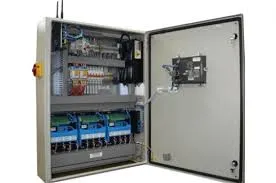Fireproof Sealing Strips Essential Safety Solutions for Your Home and Business
In today's world, fire safety has emerged as a fundamental concern for homeowners and businesses alike. One innovative solution that has gained significant attention is the fireproof sealing strip. These strips are designed to enhance fire resistance in buildings, helping to prevent the spread of flames and smoke during a fire emergency. In this article, we will explore what fireproof sealing strips are, their benefits, applications, and installation processes.
What Are Fireproof Sealing Strips?
Fireproof sealing strips are specially engineered materials intended to seal gaps around doors, windows, and other openings in walls. Made from a variety of fire-resistant materials, including silicone, intumescent compounds, and metal, these strips expand when exposed to high temperatures. This expansion creates a tight seal that helps to block flames and smoke from spreading, providing critical extra minutes for occupants to escape and enabling firefighters to control the situation more effectively.
Benefits of Fireproof Sealing Strips
1. Enhanced Fire Safety The primary benefit of installing fireproof sealing strips is increased safety. By preventing the movement of smoke and flames, these strips can significantly reduce the risk of fire-related injuries and fatalities.
2. Regulatory Compliance Many jurisdictions have specific fire safety regulations that buildings must adhere to. Using fireproof sealing strips can help property owners meet these legal requirements, avoiding potential fines and ensuring the safety of all occupants.
3. Energy Efficiency Besides fire resistance, these sealing strips also provide insulation, helping to keep indoor temperatures stable. This can lead to reduced energy costs, which is an added bonus for homeowners and businesses.
4. Durability and Longevity Made from high-quality materials, fireproof sealing strips are designed to withstand wear and tear. They offer a long-term solution for fire safety, requiring minimal maintenance over time.
Applications of Fireproof Sealing Strips
Fireproof sealing strips are versatile and can be employed in various settings, including
- Residential Buildings Homeowners often use these strips to protect living spaces, especially in areas like kitchens and basements, where the risk of fire might be higher.
fireproof sealing strip

- Commercial Properties Businesses, particularly those in industries such as manufacturing and retail, are increasingly installing these strips to safeguard their assets and protect employees.
- Public Buildings Schools, hospitals, and government buildings benefit significantly from enhanced fire safety measures provided by fireproof sealing strips.
Installation Process
Installing fireproof sealing strips is a straightforward process that can typically be completed in a few steps
1. Measurements Measure the gaps around doors and windows where the sealing strips will be installed. This ensures you purchase the correct length of strip.
2. Surface Preparation Before installation, clean the area thoroughly to ensure proper adhesion. Remove any dust, grease, or old insulation.
3. Cutting and Fitting Cut the sealing strips to the appropriate lengths. Fit them snugly into the gaps, ensuring there are no spaces where flames or smoke could get through.
4. Securing Depending on the type of sealing strip, you may need to use adhesive or screws to secure it in place. Follow the manufacturer's instructions for best results.
5. Testing After installation, it's good practice to test the seals to ensure they function correctly. Close the door or window and check for any drafts or openings.
Conclusion
Fireproof sealing strips are a crucial component of fire safety in both residential and commercial properties. Their ability to prevent the spread of flames and smoke can save lives and protect property. As awareness of fire safety continues to grow, investing in such protective measures is not only a wise choice but a responsible one. By understanding their benefits and application processes, property owners can significantly enhance their fire safety protocols, ultimately creating a safer environment for all.
-
Self Amalgamating Tape: Redefining Electrical Insulation and ProtectionNewsAug.07,2025
-
Seal Strip Solutions: Revolutionizing Energy Efficiency and Comfort in Modern BuildingsNewsAug.07,2025
-
High Voltage Electrical Tape: Powering Safety and Reliability in Modern InstallationsNewsAug.07,2025
-
Flex Tape Waterproof: Transforming the Future of Instant RepairsNewsAug.07,2025
-
Elevate Electrical Safety Standards with High-Performance PVC Electrical TapeNewsAug.07,2025
-
Butyl Rubber Tape: The Ultimate Solution for Reliable Sealing and WaterproofingNewsAug.07,2025
